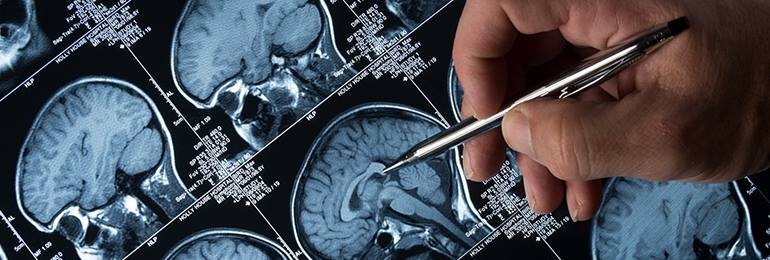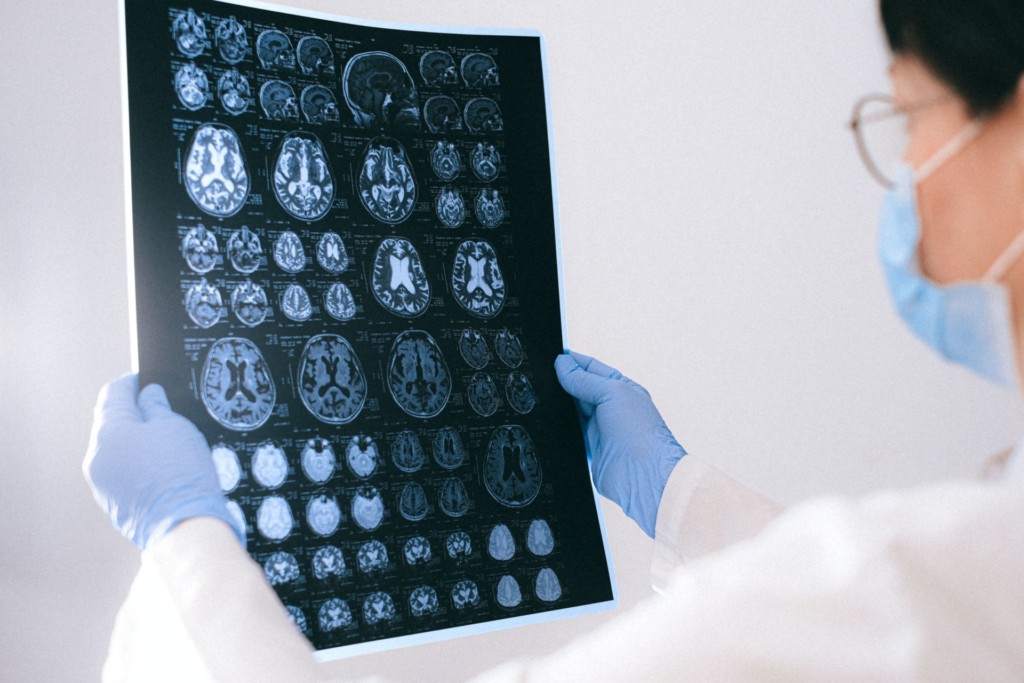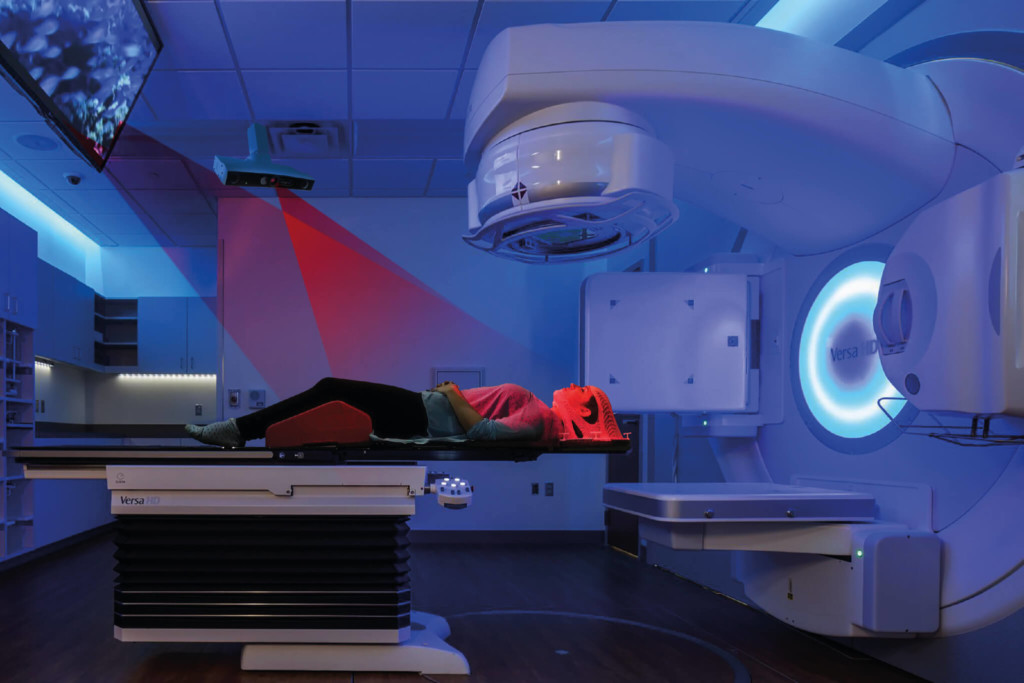Calls for Ukraine
Calls for Europe
Calls for USA

Pituitary adenoma – a benign neoplasm of the brain. The tumor grows in the epididymis, which is the size of a small pea – the pituitary gland. This gland is one of the central organs in the endocrine system. The pituitary gland affects human growth and development, metabolism and hormone production by other endocrine organs. Without timely treatment, a pituitary adenoma can lead to partial or complete loss of vision, as well as to hormonal disorders.
Scientists believe that pituitary adenoma occurs spontaneously. Genetic mutations play a key role in the development of adenoma. The structure of genes changes during life under the influence of various environmental factors.
Genetic mechanisms govern the growth, division and development of every cell in the human body. A mutation in the DNA that stores information about a person can lead to uncontrolled growth of the adenohypophysis.
Certain hereditary syndromes and diseases increase a patient’s chances of having a pituitary adenoma. These conditions are referred to as risk factors for the development of the disease:
Pituitary adenoma can occur at any age. Until the age of 20, the risk of adenoma is slightly lower than at an older age.
In order to prescribe the correct treatment and determine the prognosis of the disease, doctors divide adenomas by size and ability to produce hormones. Depending on the size of the tumor, there are:
In half of the cases, identified adenomas produce excess hormones. Such adenomas are called hormone-active. Doctors isolate hormone-active adenomas with increased production of the following hormones:
Signs of a pituitary adenoma are diverse and differ in each individual case. This is due to the peculiarity of the tumor. If an adenoma produces an excess amount of a certain hormone, doctors will identify it in the early stages based on characteristic endocrinological symptoms.
Hormone-inactive tumors can grow to the size of a macroadenoma (more than 1 cm), since they don’t cause any symptoms for a long time and don’t bother the patient. Often they are detected by chance during CT or MRI for other diseases.
Over time, the adenoma begins to press on the surrounding structures of the brain and increases intracranial pressure. This leads to the development of general symptoms:
Vision problems are associated with the pressure of the tumor on the optic tract, which connects the eye and the center of vision in the brain. Visual impairment can be reversible if the tumor is diagnosed on time and treated quickly.
Adenoma can compress normal cells of the pituitary gland, which leads to disruption of normal hormone secretion. Lack of pituitary hormones affects the general condition of the patient and leads to the development of the following symptoms:
A growth hormone
Adenoma can produce large amounts of growth hormone – somatotropin. If the tumor develops in childhood and adolescence, growth hormone causes gigantism. Patients with gigantism are abnormally tall. Usually, children complain of excessive sweating and bone pain.
In adults, further body growth is impossible, since long tubular bones don’t respond to growth hormone. Under the influence of an excessive amount of growth hormone, the growth of the bones of the skull, face, arms and legs is observed in patients. This condition is called acromegaly.
Adrenocorticotropic hormone (ACTH)
If the pituitary gland overproduces ACTH, the patient develops Cushing’s disease. In this pathological condition, the adrenal glands produce too much cortisol. Normally, cortisol is very important for the body, as it is involved in the metabolism of carbohydrates in the body and is responsible for the stress response.
Symptoms are characteristic of Cushing’s disease:
Prolactin
An adenoma that produces an excessive amount of prolactin is called prolactinoma or lactotrophic adenoma. Doctors more often find this tumor in young girls and elderly men. Prolactin is important for the regulation of female sex hormones, sexual arousal. The hormone regulates milk production in the breast in postpartum women.
Prolactinoma affects women and men in different ways. High prolactin levels in men lead to breast enlargement and erectile dysfunction. In women, the menstrual cycle is disturbed. Common symptoms are decreased libido and infertility.
Thyroid-stimulating hormone
Adenoma of the pituitary gland with increased secretion of thyrotropin is quite rare. Thyroid stimulating hormone affects the thyroid gland, which in turn secretes many hormones T3 (triiodothyronine) and T4 (thyroxine).
Symptoms of an overactive thyroid gland:
Gonadotropic hormone
Gonadotropic adenomas produce luteinizing hormone (LH) and follicle-stimulating hormone (FSH). This can lead to decreased libido and infertility in both women and men.
Adenomas secreting gonadotropic hormones are usually asymptomatic. The hormones produced are usually not enough to cause the above symptoms. Asymptomatic tumor growth leads to the development of a macroadenoma, which compresses the surrounding nerve tissue.

Consultation and examination by a doctor
The doctor will take a medical history and review your medical history. If you suspect a pituitary adenoma, it is important to exclude hereditary forms of diseases, for example, multiple endocrine neoplasia. Therefore, the doctor may ask questions about the health of your relatives.
After that, the doctor examines the patient to exclude obvious endocrinological disorders. During the period of diagnosis, the patient can consult a neurosurgeon, ophthalmologist, endocrinologist, radiation therapist and other specialists.
Increasing in size, the pituitary adenoma extends beyond its anatomical zone – the sella turcica and squeezes the surrounding structures, including the optic nerves. This leads to visual impairment. Initially, the patient may have impaired lateral (peripheral) vision. With the growth of the tumor, visual acuity drops to complete blindness. An ophthalmologist will conduct special tests and examine the fundus to assess the extent of damage to the optic nerves.
Laboratory tests
To accurately determine if the adenoma is producing any hormones, the doctor will order laboratory blood and urine tests. The following indicators are measured:
An increased level of one of the hormones indicates obvious endocrinological disorders, however, laboratory tests don’t directly indicate the presence or absence of a pituitary adenoma.
CT (Computed tomography)
Computed tomography allows you to see large pituitary adenomas. Doctors obtain images using x-rays. The resulting images are processed by a computer and the resulting images are more detailed than conventional radiography.
MRI (Magnetic resonance imaging)
MRI is the “gold standard” for diagnosing pituitary adenoma. Unlike CT, magnetic resonance imaging examines the electromagnetic radiation of tissues. These shots are more detailed and accurate. MRI can detect adenomas less than 3 mm in diameter (microadenomas).
Examples of the cost of pituitary adenoma diagnostics in clinics around the world:
Adenoma of the pituitary gland does not affect adjacent tissues and does not give metastases. Usually, pituitary tumors have a favorable prognosis and don’t lead to death. The five-year survival rate since diagnosis is over 97%.
Despite this, pituitary adenoma is a dangerous disease that threatens the health and life of the patient:
Tumors of the pituitary gland are common – up to 15% of all intracranial tumors. According to Johns Hopkins University (USA), pituitary adenoma can develop in 1 in 10 people during their lifetime.
In most cases, the adenoma is asymptomatic and does not bother the person. In 50% of patients, pituitary tumors lead to changes in the secretion of hormones.

Not all pituitary tumors require treatment. In some cases, active monitoring is sufficient – regular visits to a neurosurgeon or endocrinologist and performing radiological studies. This allows doctors to monitor the adenoma over time. Doctors begin active treatment if the adenoma continues to grow or endocrinological symptoms worsen.
In modern medical centers for the treatment of pituitary adenoma, surgery, radiation therapy or drug treatment are performed. These methods are used both separately, as monotherapy, and as a combination treatment.
Surgery is necessary if the adenoma compresses the optic nerves or other structures of the brain, and also produces an excess amount of any hormone.
In foreign clinics, doctors prefer minimally invasive removal of brain tumors. A pituitary adenoma can be removed through the nasal passage and sinuses. This operation is called endoscopic transnasal transsphenoidal adenomectomy. The main advantage is the absence of incisions in the head area.
Large pituitary tumors are removed through a small incision in the skull. This type of surgery is called a craniotomy. This technique allows you to get to more difficult and larger adenomas.
Examples of the cost of endoscopic removal of a pituitary adenoma in clinics in different countries:
Radiation therapy for pituitary adenoma
A radiation therapist uses targeted high-energy power sources for non-surgical removal of tumors, including pituitary adenomas. Radiation therapy is performed as an independent method of treatment or in combination with surgical removal. For treatment, special devices are used – linear accelerators and radiosurgical units.
Leading foreign medical centers offer patients various options for radiation therapy.
Stereotactic radiosurgery
The adenoma is irradiated with a concentrated beam of energy during one session. Before the procedure, the effective dose is calculated and the exact location of the tumor is calculated using MRI and CT. During the procedure, healthy tissues and organs are not damaged.
External beam therapy
Unlike radiosurgery, radiation is divided into several sessions. The entire treatment cycle can last for 4-6 weeks. This technique is effective for large tumors, when it is impossible to achieve an acceptable result in 1 procedure.
Intensity modulated radiation therapy
The main feature of this technique is the computer calculation of the dose and radiation intensity. New linear accelerators are able to distribute radiation at different angles and in different parts of the tumor. This method makes it possible to most effectively affect the tumor with minimal impact on healthy tissue.
Proton therapy
The most modern method of radiation therapy. Radiation is not based on X-rays, but on protons. Proton particles have the advantage – when interacting with tissues, they stop and don’t spread to surrounding tissues, as does X-ray radiation.
The choice of the method of radiation therapy is influenced by the size of the tumor, the presence of concomitant diseases, the age of the patient, and other factors.
Examples of the cost of radiation therapy for pituitary adenoma in clinics in different countries:
Drug treatment
An endocrinologist may prescribe special medications to block the action of excess pituitary hormones or to shrink the tumor.
Most drugs reduce the activity of prolactin, adrenocorticotropic hormone, and growth hormone (somatotropin).
Before prescribing drug therapy, the patient undergoes a thorough examination of the level of hormones, since drugs can cause side effects.
After removal of the tumor or radiation therapy, the normal levels of pituitary hormones may decrease. In this situation, the doctor prescribes replacement therapy to keep the hormone levels normal.
The cost of treatment is calculated on a case-by-case basis. The price is influenced by the country in which the patient was treated, the accreditation of the clinic, and the qualification level of the doctor. Depending on the type of adenoma, the doctor prescribes one method of treatment or complex therapy. The treatment plan is formed after a comprehensive diagnosis.
Over time, the adenoma begins to press on the surrounding structures of the brain and increases intracranial pressure. This leads to the development of general symptoms:
Vision problems are associated with the pressure of the tumor on the optic tract, which connects the eye and the center of vision in the brain. Visual impairment can be reversible if the tumor is diagnosed on time and treated quickly.
Adenoma can compress normal cells of the pituitary gland, which leads to disruption of normal hormone secretion. Lack of pituitary hormones affects the general condition of the patient and leads to the development of the following symptoms:
A growth hormone
Adenoma can produce large amounts of growth hormone – somatotropin. If the tumor develops in childhood and adolescence, growth hormone causes gigantism. Patients with gigantism are abnormally tall. Usually, children complain of excessive sweating and bone pain.
In adults, further body growth is impossible, since long tubular bones don’t respond to growth hormone. Under the influence of an excessive amount of growth hormone, the growth of the bones of the skull, face, arms and legs is observed in patients. This condition is called acromegaly.
Adrenocorticotropic hormone (ACTH)
If the pituitary gland overproduces ACTH, the patient develops Cushing’s disease. In this pathological condition, the adrenal glands produce too much cortisol. Normally, cortisol is very important for the body, as it is involved in the metabolism of carbohydrates in the body and is responsible for the stress response.
Symptoms are characteristic of Cushing’s disease:
Prolactin
An adenoma that produces an excessive amount of prolactin is called prolactinoma or lactotrophic adenoma. Doctors more often find this tumor in young girls and elderly men. Prolactin is important for the regulation of female sex hormones, sexual arousal. The hormone regulates milk production in the breast in postpartum women.
Prolactinoma affects women and men in different ways. High prolactin levels in men lead to breast enlargement and erectile dysfunction. In women, the menstrual cycle is disturbed. Common symptoms are decreased libido and infertility.
Thyroid-stimulating hormone
Adenoma of the pituitary gland with increased secretion of thyrotropin is quite rare. Thyroid stimulating hormone affects the thyroid gland, which in turn secretes many hormones T3 (triiodothyronine) and T4 (thyroxine).
Symptoms of an overactive thyroid gland:
Gonadotropic hormone
Gonadotropic adenomas produce luteinizing hormone (LH) and follicle-stimulating hormone (FSH). This can lead to decreased libido and infertility in both women and men.
Adenomas secreting gonadotropic hormones are usually asymptomatic. The hormones produced are usually not enough to cause the above symptoms. Asymptomatic tumor growth leads to the development of a macroadenoma, which compresses the surrounding nerve tissue.
Please rate the work of MedTour
